

Plumbago is a superb vine. All admire its flowers and foliage.
Key Plumbago facts
Name – Plumbago auriculata
Former name – Plumbago capensis
Family – Plumbaginaceae
Height – 3 to 6 ½ feet (1 to 2 meters)
Foliage – semi-evergreen
Type – shrub
Soil: ordinary – Exposure: full sun – Flowering: end spring → mid-fall
Caring for this plant, from planting to pruning, are good practices that will help you obtain a beautiful blooming.
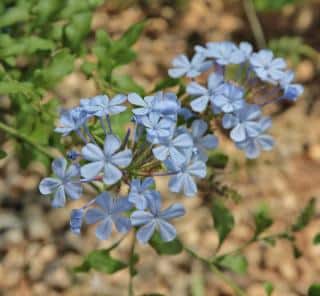 Favor planting plumbago in spring in a place with a lot of sun.
Favor planting plumbago in spring in a place with a lot of sun.
When not in this season, simply avoid high temperatures to plant your plumbago.
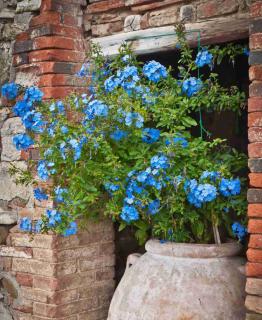 It is advised to plant your plumbago in good flower plant soil mix. As with most container-grown flowers, drainage is very important. Roots should never sit in water.
It is advised to plant your plumbago in good flower plant soil mix. As with most container-grown flowers, drainage is very important. Roots should never sit in water.
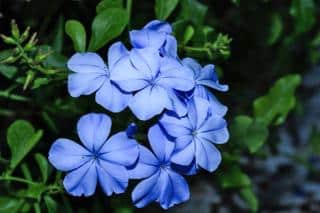 Plumbago is not a difficult plant to multiply, but there are a few tips and rules to follow for success.
Plumbago is not a difficult plant to multiply, but there are a few tips and rules to follow for success.
There are different ways to propagate plumbago. The main techniques include cuttings, seed propagation, and layering. They have varying degrees of success. In the end, cuttings are best because they guarantee 100% similarity to the mother plant.
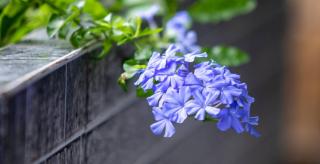 It isn’t really a requirement to prune.
It isn’t really a requirement to prune.
Annual pruning is eventually possible at the end of winter or at the beginning of spring, proceed lightly in order to stimulate the blooming and preserve the shape.
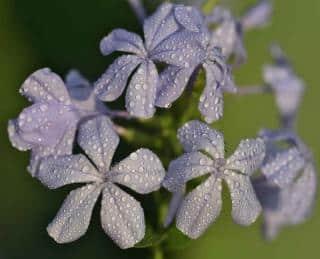 Plumbago, apart from watering after planting, will need a lot of water when the weather is hot, especially if grown in a pot.
Plumbago, apart from watering after planting, will need a lot of water when the weather is hot, especially if grown in a pot.
For the best growth and an abundant blooming, add flower plant fertilizer or shrub fertilizer every two weeks in spring and summer.
Stop adding fertilizer as soon as your plumbago has stopped blooming.
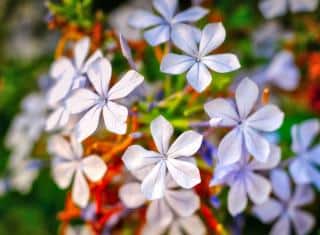 You can set it up in your garden if the climate is mild enough. Double-check that this is possible, because plumbago is vulnerable to frost and will suffer if temperatures drop below 32°F (0°C).
You can set it up in your garden if the climate is mild enough. Double-check that this is possible, because plumbago is vulnerable to frost and will suffer if temperatures drop below 32°F (0°C).
Where freezing isn’t too harsh (light frost), plumbago will lose its leaves. They grow back in spring, with the blooming.
Although it generally resists diseases well, plumbago regularly experiences aphid onslaughts.
Birds and butterflies love plumbago for different reasons.
Bees are also often attracted to the nectar. Deer, on the other hand, don’t find the plant very appetizing.
One of the more common plumbago varieties is the tight-flowered ‘Monott’ plumbago. It has beautiful round clusters of flowers.
Another beautiful variety that comes in either blue or white is the Plumbago Escapade series. It is especially happy when simply growing in pots and containers.
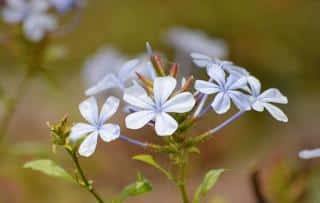 This small vining tree, native to South Africa, propounds beautiful blooming for a large part of the year.
This small vining tree, native to South Africa, propounds beautiful blooming for a large part of the year.
The intense blue of its flowers is particularly remarkable and appealing.
But it is particularly well-suited to growing in pots, which will make it easy to bring them indoors to a cool spot that is sheltered from the harshest colds over winter.
Lastly, if you wish to train it into a climbing vine, you can attach it to a lattice because it won’t cling to the wall on its own.
In our latitudes, when grown in a pot, a plumbago plant can reach anywhere from 3 to 6 ½ feet (1 to 2 m), whereas it easily rises to 13 to 17 feet (4 to 5 m) in its natural environment.
Plumbago can trigger rashes and dermatitis on skin. For most persons, it’s insignificant but some persons are naturally more sensitive and might need to see a doctor if itching or reddish patches appear.
The name “Plumbago” (pronounced – plum-BAY-go) has its roots in the Latin word “plumbum”, which means lead. In olden times, it was believed to be a medicinal plant used as a cure for lead poisoning.
Today, modern research hasn’t yet been carried out to prove or disprove the claim, so don’t rely on it – consult a physician instead!
Another possibility is linked to the use of lead to make paint colors – color blue, like the flower!
If you place it next to a footpath, be ready to spend your time picking seeds from your clothes! They’re light and covered with small hooks and will stick to your clothing. For that reason, it’s best to place them far from pathways.